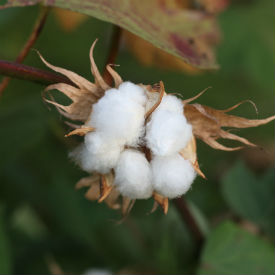Bremen Cotton Exchange Says Cotton is Not a Thirsty Plant
On World Water Day, the Bremen Cotton Exchange based in Germany, reports that much of the information circulating about the cotton industry is inaccurate.

BREMEN, Germany-On March 22, World Water Day, German-based Bremen Cotton Exchange reports that much of the information circulating about the cotton industry and its water consumption is inaccurate.
The organization says reports on the topic are due for an update. This is especially true for those that say cotton counts as a “thirsty plant” or that it takes between 10,000 and 17,000 liters of water to produce a single kilogram, or roughly 2 pounds, of natural fiber.
Bremen Cotton Exchange says false information is continuing to be reproduced via all mass media channels including the internet, newspapers, magazines, radio, and TV. As an internationally recognized center of competence, the Bremen Cotton Exchange wants to counteract this type of misinformation with objectively verified data.
Cotton is a xerophyte, a plant that can grow especially in dry climates. “But, just like any other living thing, cotton needs water at certain times in its growth cycle. In particular, to produce good yields. Recent global research by the scientific department of the Washington-based International Cotton Advisory Committee (ICAC) shows that producing one kilogram of ginned cotton requires on average only 1,214 liters of artificial irrigation water worldwide. 41.3 percent of the total volume of cotton production does not require artificial irrigation. This relates to the 55 percent of the global cotton growing area which is irrigated exclusively by rain,” says Bremen Cotton Exchange.
Furthermore, the 2011 study “The Green, Blue and Grey Water Footprint of Crops and Derived Crop Products,” notes that cotton consumes three percent of the water used in agriculture for artificial irrigation while wheat requires 15 percent, rice 13 percent, and corn 10 percent.
In recent years, cotton producers in many countries have used modern irrigation systems, which has led to a huge increase in the efficiency of water use-making it possible to produce significantly more cotton using less water. Cotton research is working to further improve the properties of cotton in terms of its high drought tolerance.
The United States has the goal of reducing water use in growing cotton by 18 percent within 10 years. The necessary technical developments include, but aren’t limited to, state of the art, computer-controlled sensor technology. Additionally, considerable progress has occurred in cotton-producing countries such as Australia and Israel.
Bremen Cotton Exchange is happy to answer any questions concerning cotton and water and is willing to provide individuals with objective answers and additional materials.
For more information, visit baumwollboerse.de/en.




